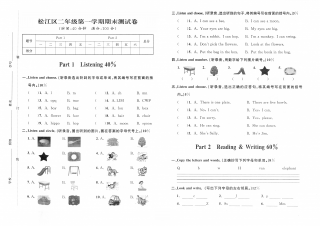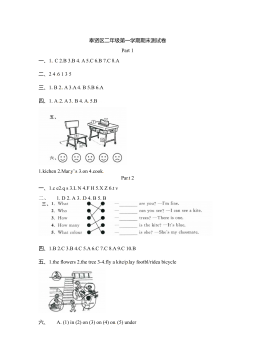基于多智能体优化和投影寻踪技术的金融中心综合评价与实证研究
摘要国内很多城市提出要建成国际性的金融中心或区域性金融中心的设想和目标,但并不是所有城市都具备成为金融中心的实力或潜力,也不是所有城市都能建设成为功能齐全的、辐射全国的金融中心。因此本文选择典型金融中心城市进行综合评价以把握我国金融中心发展水平。本文尝试把投影寻踪聚类模型引入金融中心综合评价中,旨在为我国金融中心综合评价提供一种科学有效的新方法。第一章首先对金融中心综合评价的相关研究和投影寻踪应用现状进行综述。第二章介绍了金融中心形成过程及相关理论,分析了金融中心城市应该具备的特征,并从经济和金融两个角度阐述了影响金融中心发展水平的因素。第三章在借鉴前人的研究成果上,从金融和经济两方面选取初步...
相关推荐
-
人教PEP英语-((开学摸底测试 综合提升卷)2023-2024学年五年级英语上册开学摸底考试卷(一)(人教PEP版)VIP免费

 2024-09-30 8
2024-09-30 8 -
人教PEP英语-((开学摸底测试 重难点必刷卷)2023-2024学年四年级英语上册开学摸底考试卷(二)(人教PEP版)VIP免费

 2024-09-30 9
2024-09-30 9 -
人教PEP英语-((开学摸底测试 重难点必刷卷)2023-2024学年五年级英语上册开学摸底考试卷(二)(人教PEP版)VIP免费

 2024-09-30 7
2024-09-30 7 -
人教PEP英语-((开学摸底测试 综合提升卷)2023-2024学年四年级英语上册开学摸底考试卷(一)(人教PEP版)VIP免费

 2024-09-30 7
2024-09-30 7 -
人教PEP英语-(2023-2024学年六年级英语上册开学摸底考试卷A卷(人教PEP版)VIP免费

 2024-09-30 8
2024-09-30 8 -
人教PEP英语-(2023-2024学年六年级英语上册开学摸底考试卷B卷(人教PEP版)VIP免费

 2024-09-30 8
2024-09-30 8 -
人教PEP英语-(开学摸底测试 易错题精选卷)2023-2024学年五年级英语上册开学摸底考试卷(三)(人教PEP版)VIP免费

 2024-09-30 7
2024-09-30 7 -
外研版英语-(开学摸底测试 易错题精选卷)2023-2024学年六年级英语上册开学摸底考试卷(三)(外研版三起)VIP免费

 2024-09-30 8
2024-09-30 8 -
外研版英语-(开学摸底测试 易错题精选卷)2023-2024学年五年级英语上册开学摸底考试卷(三)(外研版三起)VIP免费

 2024-09-30 8
2024-09-30 8 -
外研版英语-(开学摸底测试 重难点必刷卷)2023-2024学年六年级英语上册开学摸底考试卷(二)(外研版三起)VIP免费

 2024-09-30 8
2024-09-30 8
相关内容
-

2021-2022学年牛津上海版(试用本)二年级上册期末模拟测试卷英语试卷(解析版)
分类:中小学教育资料
时间:2024-11-19
标签:无
格式:DOC
价格:5 积分
-

2019-2020学年2年级松江区英语上期末试卷答案
分类:中小学教育资料
时间:2024-11-19
标签:无
格式:DOCX
价格:5 积分
-

2019-2020学年2年级松江区英语上期末试卷
分类:中小学教育资料
时间:2024-11-19
标签:无
格式:PDF
价格:5 积分
-

2019-2020学年2年级奉贤区英语上期末试卷答案
分类:中小学教育资料
时间:2024-11-19
标签:无
格式:DOCX
价格:5 积分
-

2021-2022学年牛津上海版(试用本)二年级上册期中模拟测试英语试卷(原卷版)
分类:中小学教育资料
时间:2024-11-19
标签:无
格式:DOC
价格:5 积分






